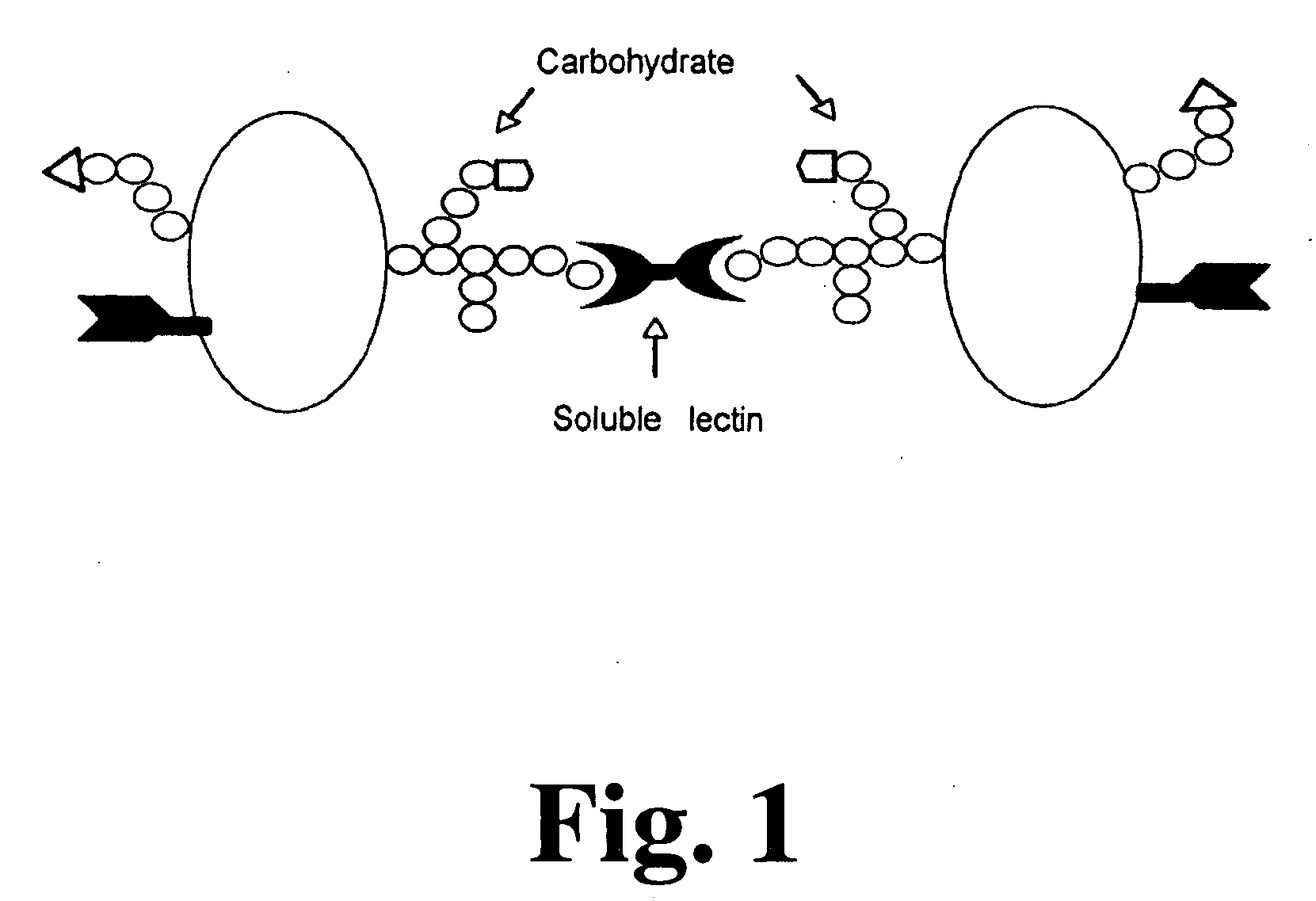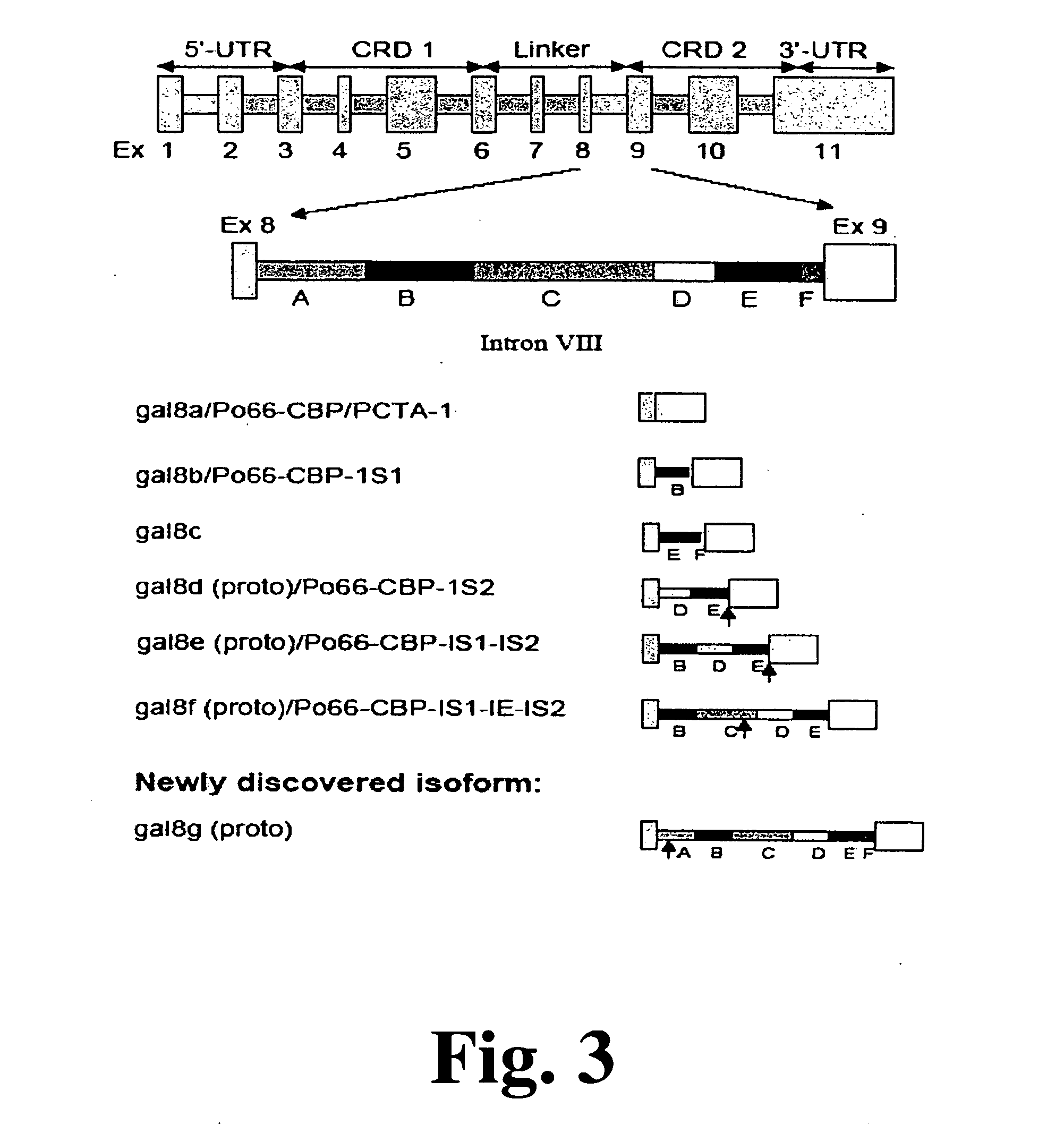Method and assay for early diagnosis of prostate cancer
a prostate cancer and assay technology, applied in the field of prostate cancer detection, can solve the problems of affecting the detection of prostate cancer,
- Summary
- Abstract
- Description
- Claims
- Application Information
AI Technical Summary
Benefits of technology
Problems solved by technology
Method used
Image
Examples
example 1
Detection of Galectin Methylation
[0079]RT-PCR is performed on tissue RNAs (available from Ambion) using the Reverse Transcription System (Promega, Madison, Wis.) following the manufacturer's instructions. For expression of gal3 and gal8g genes, custom primers specific to each galectin are made by Invitrogen (Carlsbad, Calif.). For RNA integrity and loading control, β-actin is used and amplified. PCR is performed in a PTC-200 thermal cycler from MJ research (Waltham, Mass.) using the protocols previously described (Ahmed et al., 2004).
[0080]As discussed above, results show a distinct expression pattern of galectins in PC cells. Most notably, gal3 is highly expressed in AI cell lines PC-3 and DU145, but show little or no expression in AD cell line LNCaP as shown in FIG. 4A. In contrast, most isoforms of gal8 are expressed in LNCaP, but exhibit little or no expression in PC-3 and DU145.
[0081]Total RNA (20 ug) is resolved in a 1% agarose / 6% formaldehyde gel, transferred to nylon membran...
example 2
gal3 Promoter Methylation in Normal and Tumor Prostate Tissues
[0090]gal3 promoter from stage I and II tumors is heavily methylated (most cytosines of 51 CpG sites), but from stage III tumors showed only few methylation sites, mostly between −199 to −252 nt (FIG. 12). The gal3 promoter from stage IV tumor was also lightly methylated between −112 to −227 nt. In normal prostate and BPH samples, the gal3 promoter was mostly unmethylated (FIG. 12).
example 3
MS-PCR Assay for Detection of gal3 Promoter Methylation in Tissue, Serum and Urine Samples
[0091]The methylated primers after taking into account the bisulfite conversion reaction were as follows: forward primer HuG3BPMF1, 5′-CGTTTCGTC-GGCGTTCG-3′ (SEQ ID NO: 13) (ranging −9 to +8 of the promoter sequence, 20) and reverse primer HuG3BPMR1, 5′-CACGCAACTCACCGCTCG-3′ (SEQ ID NO: 14) (ranging from +47 to +64 of the promoter sequence). To identify any unmethylated DNA allele, PCR was also performed using unmethylated primers. The PCR product obtained with the unmethylated primers serves also as a positive control for the presence of DNA in the PCR reaction, when MS-PCR with the methylated primers is negative. The unmethylated primers, designed by taking into account the bisulfite conversion reaction, were as follows: forward primer HuG3BPUF1, 5′-GAGGTTTGGAGTTATTGTTTTGTTGGTG-3′ (SEQ ID NO: 15) (ranging −24 to +4 of the promoter sequence) and reverse primer HuG3BPUR1, 5′-CCCCACACAACTCACCACT...
PUM
 Login to View More
Login to View More Abstract
Description
Claims
Application Information
 Login to View More
Login to View More - R&D
- Intellectual Property
- Life Sciences
- Materials
- Tech Scout
- Unparalleled Data Quality
- Higher Quality Content
- 60% Fewer Hallucinations
Browse by: Latest US Patents, China's latest patents, Technical Efficacy Thesaurus, Application Domain, Technology Topic, Popular Technical Reports.
© 2025 PatSnap. All rights reserved.Legal|Privacy policy|Modern Slavery Act Transparency Statement|Sitemap|About US| Contact US: help@patsnap.com



